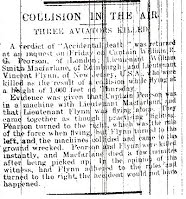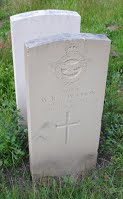H. P. Tozer
Second Lieutenant, Royal Flying Corps/Durham Light Infantry, 9th Battalion
Died in a flying accident on 16 December 1916, aged 25
CWGC: “Son of Henry James and Agnes Emma Tozer, of 31, Lansdowne Gardens, Clapham, London.”
Remembered at East Harnham (All Saints) Churchyard, Wiltshire
Information from the censuses
In 1911 Harold Percy Tozer, 19, a clerk for a timber merchants, lived with his parents and sister at 31 Lansdowne Gardens, Stockwell. His father, Henry James Tozer, 43, was a solicitor’s clerk from Shadwell, east London; his mother, Agnes Emma Tozer, 43, was from Ipswich. Lilian Elizabeth Tozer, Harold’s sister, was 16 and working as a clerk for a philatelist (stamp collector/dealer). Both Harold and Lilian were born in South Lambeth. The Child family lodged with the Tozers: Arthur Ernest Child, 32, a cook from Portsmouth; his wife Ethel, 32, from Egham, Surrey, and their son Leslie Eric, 8. The Tozers had been at the same address since at least 1901.
British Army WW1 Service Records 1914-1920 (Officers)
Tozer enlisted in the 4th Battalion of the Cameron Highlanders on 11 September 1914 and served for 347 days with them. He was described as 5 feet 9 inches, with a 36½ inch chest which he could expand by 3½ inches. He embarked from Southampton on 19 February 1915 and was wounded in action the following month (gunshot wound to the elbow). He was invalided back to England, to the Fairfield Hospital, Broadstairs on 18 June.
Later that year he was granted a temporary commission – 2nd Lieutenant in the Durham Light Infantry (he was gazetted on 20 August 1915). Tozer’s service from then until the accident that killed him in 1918 is not known.






